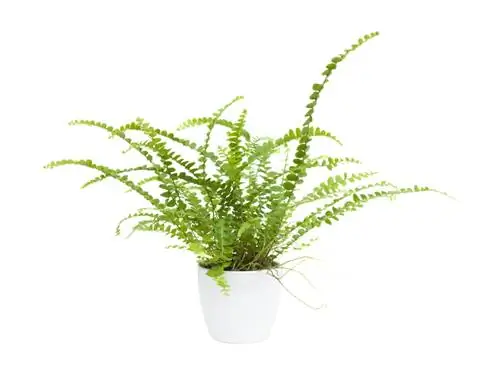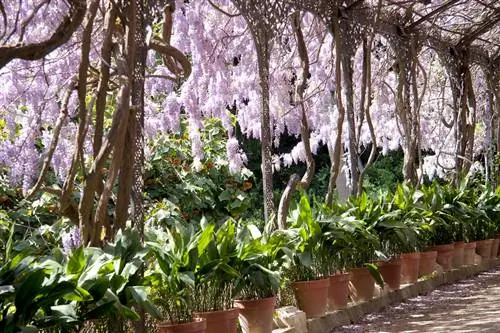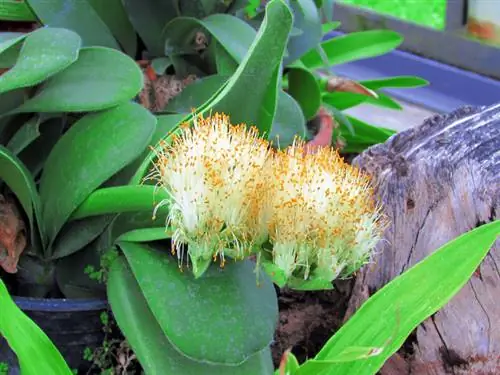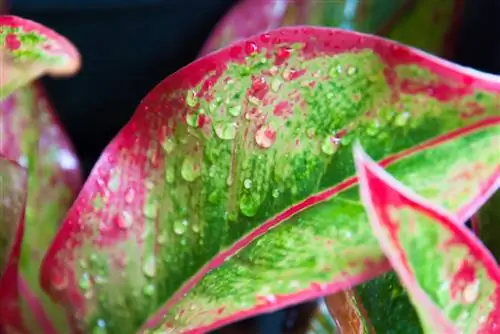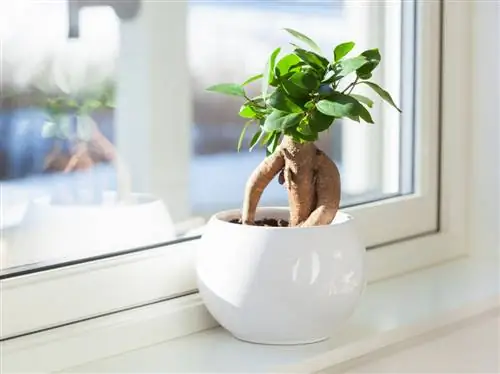- Author admin [email protected].
- Public 2023-12-16 16:46.
- Last modified 2025-01-23 11:22.
The Ficus Ginseng cannot be described as very easy to care for, but if you keep a close eye on the plant and follow a few basic rules, then you can enjoy this exotic-looking houseplant for a long time.
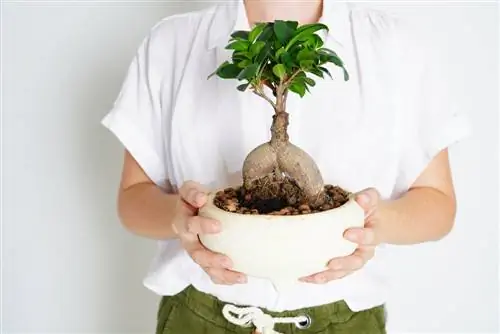
How do I properly care for a Ficus Ginseng?
Caring for Ficus Ginseng includes a bright location without direct sunlight, temperatures of 18-22°C, permeable substrate, watering and fertilizing as needed, using rainwater or stale tap water and overwintering at 12-16°C.
Location and soil
For the Ficus Ginseng to thrive, it needs a bright location without being in direct sunlight. Drafts should be avoided at all costs, as should a cold surface or too dry heating air. The Ficus Ginseng doesn't particularly like major temperature fluctuations, but it can spend the summer outside in a sheltered place.
The soil is ideally rather coarse-grained and well-drained. If you grow your Ficus Ginseng as a bonsai, you can use special bonsai soil. A mixture of sand, clay and earth is also suitable and significantly cheaper. As a houseplant, the Ficus Ginseng also thrives in standard potting soil.
Planting and repotting
When planting and repotting, make sure there is a drainage hole in the planter and create a drainage layer at the bottom. All you need to do is place a few large pebbles or two shards of pottery over the drain hole so that it is not blocked by draining earth.
You should repot a Ficus Ginseng approximately every two to three years. With bonsai, you use this opportunity to trim the root ball. If the bonsai planting pot or the pot of the houseplant still fits, then it is sufficient to change the potting soil.
Watering and fertilizing
You should not water a Ficus Ginseng according to a schedule but as needed, namely whenever the top layer of soil has dried out a little. In summer this can happen every two days, in winter it is usually much less frequent. Rainwater or stale water is more suitable than very hard water from the tap.
From April to the end of August or beginning of September, fertilize your Ficus Ginseng approximately every 14 days with standard liquid fertilizer (€6.00 on Amazon). Alternatively, you can also use fertilizer sticks or slow-release fertilizer. No special fertilizer is necessary, including bonsai fertilizer.
The Ficus Ginseng in winter
The Ficus Ginseng is not hardy. It can overwinter well at room temperature, but also a little cooler at around 12 °C to 16 °C. As an evergreen plant, it needs a lot of light even in winter.
The most important things in brief:
- Location: bright, without direct sunlight or drafts
- Temperatures between 18 °C and 22 °C
- Soil: coarse, permeable substrate (bonsai soil or mixture of clay, soil and sand)
- water and fertilize as needed
- not very lime tolerant, use rainwater or stale tap water
- If necessary, increase the humidity or spray the plant with low-lime water
- regular cutting only required for bonsai
- not hardy
- Overwintering at room temperature or 12 °C to 16 °C
Tip
Regular pruning is not necessary for Ficus Ginseng as a houseplant.


